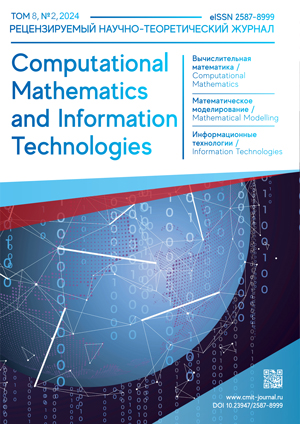
The journal Computational Mathematics and Information Technologies publishes reviews, original research articles, and brief communications dedicated to mathematical modeling, numerical methods, and information technologies aimed at addressing complex and pressing challenges in science and modern technology. The scope of research includes but is not limited to:
- Continuum mechanics
- Hydroaerodynamics
- Earth sciences
- Chemistry
- Biology
- Image processing and pattern recognition
- Parallel computing theory and its applications
- Big data technologies
- Artificial intelligence
Sections of the Journal
The journal accepts scientific and review articles corresponding to the following sections:
- Computational Mathematics
- Mathematical Modelling
- Information Technologies
General Information
The journal Computational Mathematics and Information Technologies was registered with the Federal Service for Supervision of Communications, Information Technology, and Mass Media on July 21, 2016 (Registration Certificate No. Эл № ФС77-66529 — online publication).
- Founder and publisher: Federal State Budgetary Educational Institution of Higher Education "Don State Technical University", Rostov-on-Don, Russian Federation, https://donstu.ru/
- eISSN: 2587-8999
- Year of Foundation: 2017
- Frequency: Quarterly (March, June, September, December)
- Distribution: Russia and internationally
- Website: https://www.cmit-journal.ru
- Editor-in-Chief: Alexander Ivanovich Sukhinov, Corresponding Member of the Russian Academy of Sciences, Doctor of Physical and Mathematical Sciences, Professor, Don State Technical University (Rostov-on-Don, Russia)
- Languages: Russian, English
Key Features
- Indexing
- Peer-reviewed
- Age restriction: 16+
Licensing history
The journal uses International Creative Commons Attribution 4.0 (CC BY) license.











